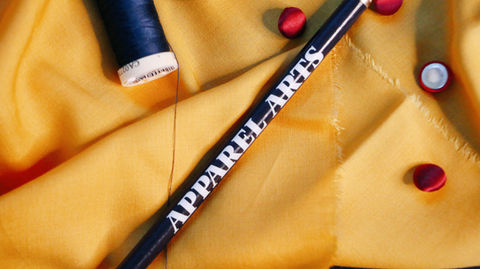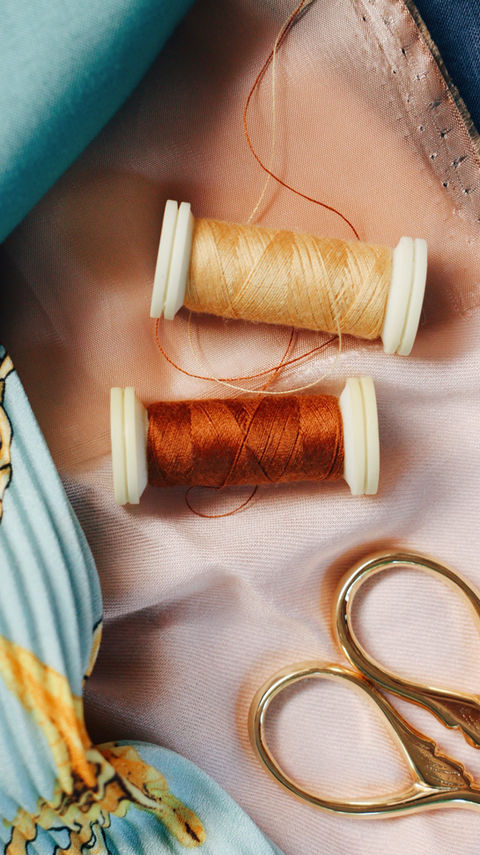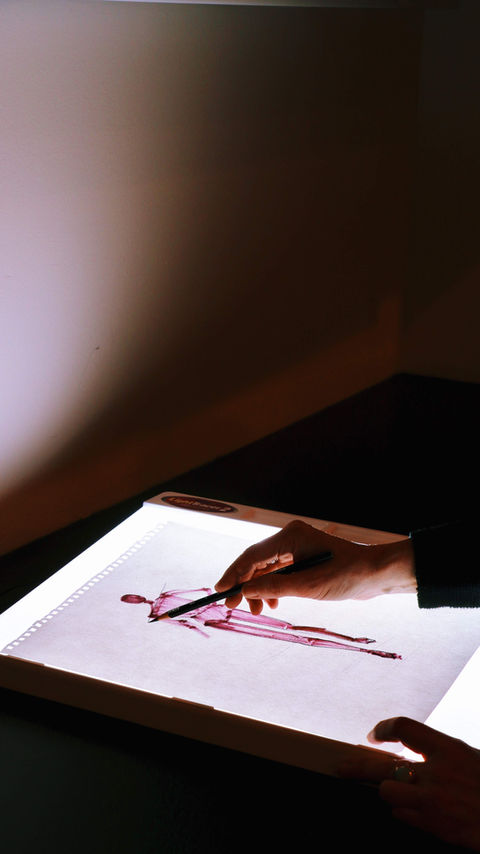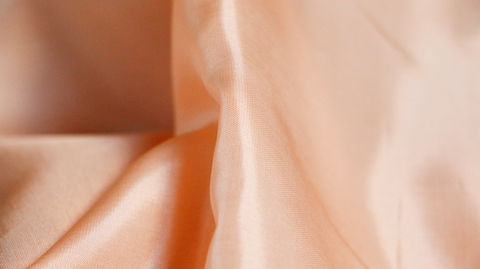
CLASS DESCRIPTIONS
PATTERN DRAFTING CLASSES
I'm excited to share the details of our comprehensive Pattern Drafting series. These courses are designed to help you build essential skills, from foundational pattern drafting to advanced garment construction.
Here's a breakdown of each course:
Pattern Drafting 1 – Skirts/Intro (8 sessions)
This introductory course builds a strong foundation in pattern drafting language, tools, and skills. You will learn to draft, sew, and fit a custom skirt sloper and apply it to create various skirt styles, including flared and pleated designs. We will cover both fashion industry practices and standards for personal sewing.
-
Prerequisite: none
-
Expect three hours of homework between classes
-
Required Textbook: Building Patterns, by Suzy Furrer
Pattern Drafting 2 – Drafting the Basic Bodice (8 sessions)
The focus of this course is on drafting and sewing a moulage, a fabric mold of the torso, which is a precursor to drafting a basic bodice sloper. This sloper serves as a starting template for any upper body garment. While the focus is on drafting for the female form, instruction for menswear slopers is also included.
-
Expect three hours of homework between classes
-
Prerequisite: Pattern Drafting 2 - Moulage/Bodice Sloper (or have a bodice sloper to work with). An advanced beginner or higher sewing skill level is required
-
Required Textbook: Building Patterns, by Suzy Furrer
Pattern Drafting 3 – Dart Manipulation (8 sessions)
Learn to manipulate darts and style lines on a bodice to create various designs. You will transfer bodice darts into French darts, Y-darts, double and triple darts, and learn how to change dart bulk into gathers or pleats. The course also covers manipulating back shoulder and waist darts, pivoting darts, and dart manipulation on pants, skirts, and sleeve patterns. We will explore various sewing, pressing, and fitting techniques for darts.
-
Expect three hours of homework between classes
-
Prerequisite: Pattern Drafting 2 - Moulage/Bodice Sloper (or have a bodice sloper to work with). An advanced beginner or higher sewing skill level is required
-
Required Textbook: Building Patterns, by Suzy Furrer
Pattern Drafting 4 – Lines (8 classes)
This course explores both interior seam lines and garment silhouettes. You will use your basic bodice sloper to draft a variety of princess line styles, along with empire line, A-line, trapeze, and chemise silhouettes.
-
Expect three hours of homework between classes
-
Prerequisite: Pattern Drafting 2 - Moulage/Bodice Sloper (or have a bodice sloper to work with). An advanced beginner or higher sewing skill level is required
-
Required Textbook: Building Patterns, by Suzy Furrer
Pattern Drafting 5 – Necklines (8 sessions)
In Necklines, the focus will be on drafting flattering necklines that do not gape or fall off the shoulders. Exercises include boat, strapless, funnel, opera, V-necklines, sweetheart, scoop, and surplice necklines. You will also practice different finishing methods like facings, linings, and bias-taped edges.
-
Expect three hours of homework between classes
-
Prerequisite: Pattern Drafting 2 - Moulage/Bodice Sloper (or have a bodice sloper to work with). An advanced beginner or higher sewing skill level is required
-
Required Textbook: Building Patterns, by Suzy Furrer
Pattern Drafting 6 – Collars (8 sessions)
Learn to draft button plackets and facings before moving on to drafting various collar styles, including camp, button-down, shawl, roll, and notched collars. Both drafting and sewing techniques for these collar styles will be taught.
-
Expect three hours of homework between classes
-
Prerequisite: Pattern Drafting 2 - Moulage/Bodice Sloper (or have a bodice sloper to work with). An advanced beginner or higher sewing skill level is required
-
Required Textbook: Building Patterns, by Suzy Furrer
Pattern Drafting 7 – Sleeves (8 sessions)
Draft and fit a basic sleeve sloper, then use it to create a variety of sleeve styles such as tailor, two-piece with a vent, sleeve with placket, pleats and cuff, short, puff, bell, and cap sleeves. You will also learn how to properly ease and set in a sleeve.
-
Expect three hours of homework between classes
-
Prerequisite: Pattern Drafting 2 - Moulage/Bodice Sloper (or have a bodice sloper to work with). An advanced beginner or higher sewing skill level is required
-
Required Textbook: Building Patterns, by Suzy Furrer
Pattern Drafting 8 – Pants (8 sessions)
This course focuses on drafting and fitting a pant sloper. You will learn to draft, sew, and fit a basic pant sloper as a starting point for various pant exercises, and then move on to drafting trouser and jean foundations. How to draft details like zipper fly and a button fly, as well as yokes and waistbands will be addressed.
-
Expect three hours of homework between classes
-
Prerequisite: An advanced beginner or higher sewing skill level is required
-
Required Textbook: Building Patterns, by Suzy Furrer
Pattern Drafting 9 – Pockets (8 sessions)
Learn to draft and sew pockets to add style and comfort to commercial or drafted patterns. Exercises include both drafting and sewing techniques for patch pockets, in-seam pockets, and welt pockets.
-
Expect three hours of homework between classes
-
Prerequisite: An advanced beginner or higher sewing skill level is required
-
Required Textbook: Building Patterns, by Suzy Furrer
Copying Ready to Wear (8 sessions)
This course teaches you to copy existing garments, a necessary skill for careers in costuming, patternmaking, or for home sewers looking to update or re-size favorite garments. You will copy three garments (a button-down shirt, pants, and a jacket) using three different copying methods.
-
Expect three hours of homework between classes
-
Prerequisite: An advanced beginner pattern drafting skill level or higher is required
-
Required Textbook: Building Patterns, by Suzy Furrer
Design Lab (6 sessions)
This small group class is perfect for students who want to further their pattern drafting or sewing practice on a project of their choice. We will have lectures and demos tailored to student projects. Consider Design Lab if you need help starting a project, finishing a project, fitting a project, would benefit from weekly accountability, or are looking for community and support.
-
Expect three hours of homework between classes
-
Prerequisite: An advanced beginner pattern drafting skill level or higher is required
Introduction to CLO - Digital Pattern Drafting 1
This course is designed for anyone interested in learning pattern drafting software but unsure where to begin.
Join Alyssa Ridder, a distinguished Costume Designer, Researcher, and Educator, as she guides you through the CLO Workspace. The class will cover basic patterning tools, troubleshooting, fundamental pattern drafting techniques, and pattern alterations. This introductory class spans a total of four hours, divided into two sessions. To prepare for the class, kindly review the minimum system requirements and install CLO Software (click here for a 14-Day Free Trial) on your computer. Additionally, students will need a 3-button mouse for the course.
Principles of Grading (Sizing) Patterns (4 sessions)
Learn to hand grade (size) patterns up one size and down one size, gaining an understanding of industry pattern grading. You will grade a skirt, pants, short bodice, long torso, sleeve, collar, and pocket. Detailed information on working with a grader and developing size charts will also be covered.
-
Expect one to two hours of homework between classes
-
Prerequisite: An advanced beginner pattern drafting skill level or higher is required
-
Materials fee: $15 (includes shipping within the US; additional fees apply for international deliveries)
SEWING CLASSES
I am excited to share some details about our upcoming sewing classes. We have a variety of options available, whether you are just starting out or looking to refine your skills with specific fabrics and techniques.
Here is a look at what we are offering:
Construction 1 (8 sessions)
This course introduces fundamental sewing techniques. You will learn how to sew and press a variety of seams, choose the right needles and threads, insert various zippers, create buttonholes, top stitch, edge stitch, sew points and corners, and much more. It is a great way to build a solid foundation and gain a better understanding of your sewing machine.
-
Expect about three hours of homework between classes.
-
Prerequisite: Students should have access to a sewing machine and should be able to wind a bobbin, thread the machine, and sew a simple straight stitch.
Construction 2 (8 sessions)
Building on Construction 1, this course delves into more advanced techniques such as sewing lap and exposed zippers, mitering corners, sewing perfect patch pockets, sewing a sleeve placket, how to apply bias tape on necklines and armholes, hand stitches, and plenty of hemming options.
-
Expect about three hours of homework between classes
-
Prerequisite: Construction 1
Techniques for Sewing Charmeuse + Bias (6 sessions)
In this class, we will work with silk charmeuse on both the length and bias grainlines. We'll cover proper needle, thread, and plate choices, various seam and finish options, zipper application, buttons/buttonholes, interfacing, underlining, a variety of different hems, and precise cutting techniques.
-
Expect three hours of homework between classes
-
Prerequisite: An advanced beginner or higher sewing skill level is required
Techniques for Sewing Chiffon (4 sessions)
Give yourself time to experiment with chiffon on both length and bias grainlines. This class focuses on proper cutting, needle, thread and plate choices, a variety of seams and finishes, a lap zipper closure, interfacing considerations, and different hemming techniques.
-
Expect three hours of homework between classes
-
Prerequisite: An advanced beginner or higher sewing skill level is required
Techniques for Sewing Denim (6 sessions)
Learn to sew your next denim project with confidence. This class covers proper needle and thread choices, flat-fell seams, topstitching, sewing a zipper fly, a button fly, a front jeans pocket, back patch pockets, belt loops, and applying rivets and traditional jeans buttons.
-
Expect three hours of homework between classes
-
Prerequisite: An advanced beginner or higher sewing skill level is required
Techniques for Sewing Leather (4 sessions)
Interested in adding leather or faux leather details to your garments? We will discuss layout options, needle, thread, and presser foot considerations, different seam options, sewing buttons and buttonholes, applying snaps, how to miter corners, and how to hem leather.
-
Expect three hours of homework between classes
-
Prerequisite: An advanced beginner or higher sewing skill level is required
Techniques for Sewing Velvet (4 sessions)
Master working with velvet through proper cutting methods, tools, seaming options, and finishes. We will explore underlining fabric, zipper and buttonhole closure options, sewing darts, as well as lining and hemming velvet.
-
Expect three hours of homework between classes
-
Prerequisite: An advanced beginner or higher sewing skill level is required
Textiles (8 sessions)
Gain the knowledge to choose the right fabric for your sewing projects. You will learn how different fibers, yarn types, weaves, knit fabrics, dyes, and finishes impact a garment. By the end of the class, you will be able to recognize, name, and understand various apparel textiles. Each student will receive a swatch kit of about 100 fabrics, along with worksheets and exercises to deepen their understanding of textiles and current market trends. This class is suitable for students of all levels, from beginner to advanced.
-
Expect two hours of homework between classes
-
Prerequisite: None
-
Materials fee: $25 (includes shipping within the US; additional fees apply for international deliveries)












